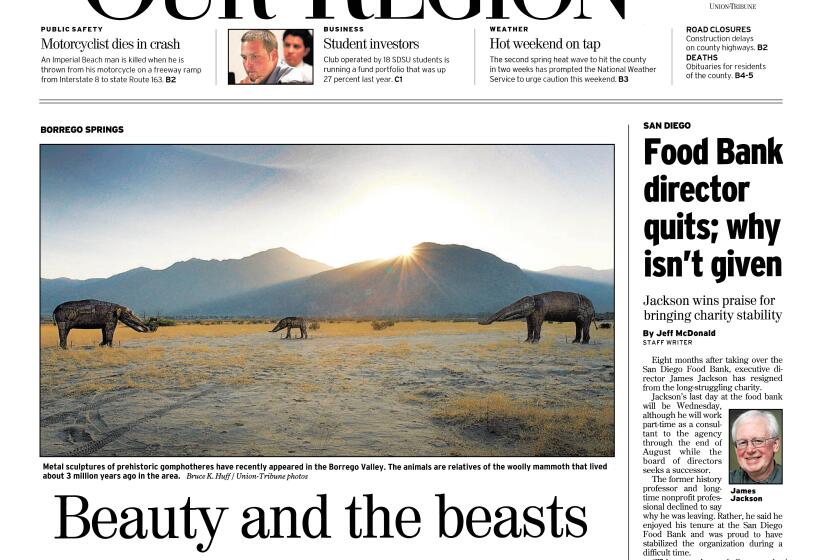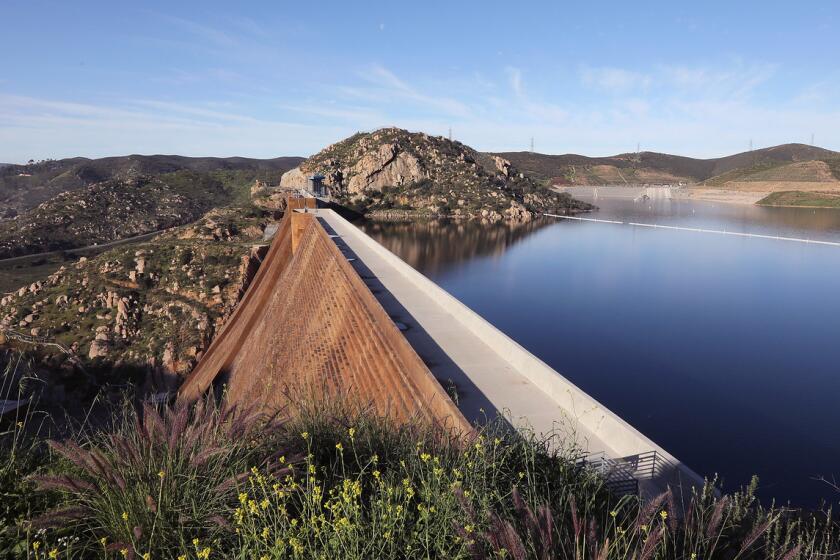Report: Fallbrook/Rainbow merger still makes sense
A bit more than two weeks before a county agency will decide if the Fallbrook and Rainbow water districts should consolidate — strongly against the wishes of Rainbow’s board of directors — it’s staff has submitted a supplemental report reaffirming its recommendation to move forward with the merger.
The Local Agency Formation Commission (LAFCO) staff report sent Friday also goes out of its way to refute numerous assertions made by the Rainbow Municipal Water District. Meanwhile, a Rainbow official calls the new report biased and misleading.
The eight-member LAFCO board was to decide the matter in July but the meeting was continued before it began to Sept. 14. At that time some of the commissioners requested that further fact finding be undertaken to update financial numbers.
Michael Ott, the executive officer of LAFCO, said original source data including audits were further evaluated.
“Staff has reaffirmed the conclusion that a reorganization of the Fallbrook PUD (Public Utility District) and Rainbow MWD makes sense from a financial and service perspective,” the report concludes.
LAFCO says research shows the merging of the districts should save roughly $2.3 million annually with reduced administrative costs and resource sharing.
Rainbow has opposed the merger for more than a year for various reasons. It disputes the amount of money that will be saved, claims services will be diminished, and worries that its mostly agricultural customer base will not be represented as well in a combined district.
While recommending the merger be approved, the report tells the county board that it can reject the merger based on any number of factors, including the apparent objection by many Rainbow ratepayers. It also cautions that approval of the merger will likely end with it being decided by voters next year.
Tom Kennedy, the general manager of the Rainbow district, said the report misrepresents the district’s position on a number of points and he wonders why Ott seems so intent on the merger taking place.
“The bias that Mr. Ott has shown toward Rainbow is clear,” Kennedy said. “This is a biased report and that’s what we’ll try to show the commission – that there is an agenda here Mr. Ott has to force this thing to go irrespective of whether it doesn’t make sense or the ratepayers don’t want it.”
Brian Brady, Fallbrook’s general manager, views the report quite differently than Kennedy.
“The two main points are they’re reaffirming the rate payer savings for the merger and they really seem to step up and dispel the negative claims by Rainbow’s PR people,” Brady said.
Rather then showing bias, Brady said he thinks the report is well balanced.
“I think the LAFCO staff for the past 16 months have been studying this and doing their job.”
The report points out that Rainbow has spent about $150,000 on consultants and public relations experts to get its message out that a merger is a bad idea. Fallbrook, the report said, has spent less than $3,000 for such opinion shaping.
Should the LAFCO commission vote to proceed with the merger it will then trigger a protest period of between 21 and 60 days. If Rainbow is able to gather signatures from at least 25 percent of the district’s registered voters (or from land owners representing 25 percent of the land value in the district) in that period of time, it would force an election, probably to be held in June, 2016. Voters in both the Fallbrook and Rainbow jurisdictions would have to approve the merger for it to take place.
If Rainbow were able to gather signatures from more than half of the registered voters during the protest period, the merger plans would die then and there.
Kennedy said gathering so many signatures in such a short period of time will be difficult and that he hopes the commission will reject the merger on Sept. 14 making a vote unnecessary.
Get Essential San Diego, weekday mornings
Get top headlines from the Union-Tribune in your inbox weekday mornings, including top news, local, sports, business, entertainment and opinion.
You may occasionally receive promotional content from the San Diego Union-Tribune.









